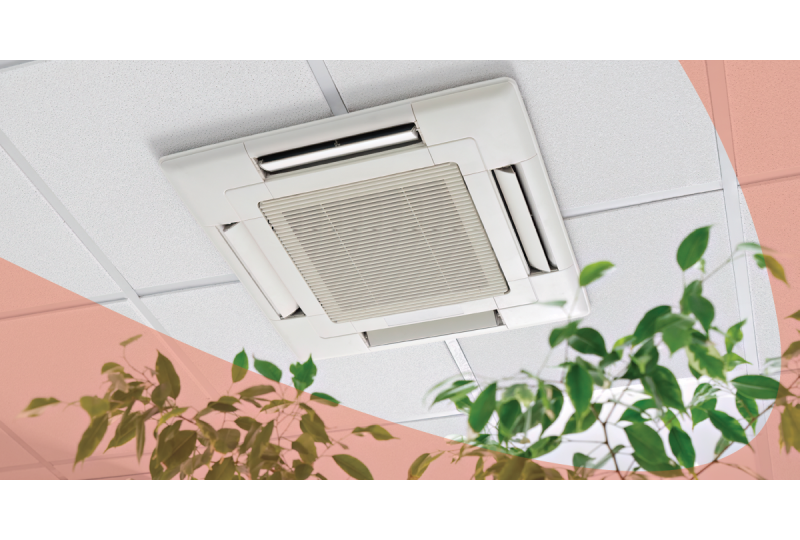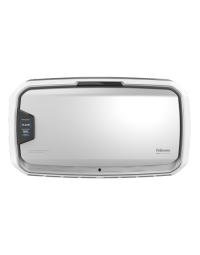Despite their necessity, washrooms often suffer from unpleasant odours that can impact visitors' overall experience. However, with the right strategies and solutions, it's possible to manage and combat odours in washroom facilities effectively.
This article will delve into specialized advice and techniques to keep washroom odours at bay. From implementing proper cleaning protocols and ventilation systems to harnessing the power of bio-enzymatic odour eliminators and air purifiers, we'll explore innovative solutions to ensure fresh and inviting washroom environments.
Understanding Washroom Odours
Washroom odours stem from several common sources, primarily urine, feces, and bacterial growth. Understanding these sources is essential to combat and eliminate odours at their root effectively. By addressing these sources, washroom odour management becomes more targeted and efficient.
Here's a closer look at these sources and why it's crucial to tackle them head-on:
- Urine: When urine comes into contact with surfaces or sits stagnant, it can release ammonia and other compounds that produce a distinct and unpleasant odour. Additionally, urine can seep into grout lines or porous surfaces, further contributing to persistent odours.
- Feces: Fecal matter also contributes significantly to washroom odours. The breakdown of organic matter in feces releases volatile compounds that generate unpleasant smells. Inadequate cleaning or improper disposal practices can exacerbate these odours, making it essential to address fecal sources diligently.
Bacterial Growth: Washrooms provide a conducive environment for bacterial growth due to moisture, warmth, and organic matter. Bacteria can thrive on surfaces, especially in areas prone to moisture accumulation, such as toilet bowls, urinals, and floors. As bacteria metabolize organic material, they produce foul-smelling compounds, leading to persistent washroom odours.

Cleaning Protocols for Odour Control
Maintaining a regular and thorough cleaning routine is crucial for effective washroom odour control. Proper disinfection and deodorization techniques can eliminate odour-causing agents and create a fresh washroom environment.
Here are some guidelines to enhance your washroom cleaning protocols:
- Regularity and Consistency:
Perform cleaning tasks in washrooms regularly to prevent the buildup of odour sources. Develop a schedule that ensures frequent cleaning and disinfection throughout the day, especially during peak usage times. Try out our free dynamic cleaning checklist here.
- Comprehensive Cleaning:
Pay attention to all surfaces and fixtures in the washroom, cleaning toilets, urinals, sinks, counters, floors, walls, and mirrors using appropriate cleaning agents. Thoroughly sanitize areas that come into direct contact with urine and feces.
- Proper Disinfection Techniques:
Utilize disinfectants approved for washroom use, following the manufacturer's instructions. Ensure sufficient contact time for the disinfectant to kill bacteria and viruses effectively. Focus on high-touch areas like door handles, faucet handles, and flush levers.
- Deodorization Techniques:
Use cleaning products specifically formulated to combat odours. Look for deodorizers that neutralize and eliminate odour-causing compounds rather than masking them temporarily. Products containing enzymes or natural odour eliminators can be effective options.
Ventilation Systems to minimize odours
Ventilation systems play a crucial role in washroom odour management by facilitating the removal of unpleasant odours and maintaining a fresh environment. Adequate airflow is essential to minimize odour accumulation.
Consider the following points regarding ventilation systems:
- Importance of Adequate Airflow:
Proper ventilation ensures fresh air circulation, reducing the concentration of odour-causing compounds. It helps remove stale air and prevents the buildup of unpleasant odours in the washroom.
- Exhaust Fans:
Install exhaust fans in washrooms to promote airflow and eliminate odours effectively. Exhaust fans draw out stale air, moisture, and smells, improving air quality and reducing the risk of odour-related issues.
- Air Circulation Systems:
Consider using air circulation systems or air purifiers with built-in fans to enhance ventilation. These systems can help circulate and filter the air, reducing odour particles and maintaining a pleasant washroom environment.

Bio-enzymatic Odour Eliminators
Bio-enzymatic odour eliminators are powerful solutions for combating washroom odours. They utilize natural enzymes that break down organic matter, eliminating the root cause of odours.
Consider the following when using bio-enzymatic products:
- How Bio-enzymatic Products Work:
Bio-enzymatic products contain specialized enzymes that break down organic waste, such as urine and feces, into simpler compounds. This enzymatic action eliminates the odour-causing molecules, leaving a clean washroom environment behind.
- Selecting Effective Products:
Choose bio-enzymatic products designed explicitly for washroom odour control. Look for those with proven efficacy in breaking down organic matter and eliminating odours. Consider products that are safe for various washroom surfaces and materials. We recommend Enviro-Solutions® ES100 Bio-Active Odour Eliminator for Washrooms, which has active microbes that continue to work to provide ongoing odour control.
- Proper Usage:
Follow the instructions provided by the product manufacturer for optimal results. Apply the bio-enzymatic product to affected areas, ensuring sufficient contact time for the enzymes to work effectively. Regular and consistent use is vital to maintaining odour control.
Air Purifiers
Air purifiers offer additional support in maintaining clean and odour-free washroom air. They help filter out airborne particles, including odour molecules, to improve air quality.
Consider the following aspects when utilizing air purifiers:
- Benefits of Air Purifiers: Air purifiers help remove odour-causing particles, allergens, and pollutants from the air, resulting in a fresher and healthier washroom environment. They also help reduce the spread of airborne bacteria and viruses, improving hygiene.
- Types of Air Purifiers: Consider different air purifiers suitable for washroom environments. Activated carbon filters effectively adsorb odour molecules, while HEPA filters capture fine particles. Ozone generators are another option, as they neutralize odours by converting them into non-odorous substances. We recommendFellowes® AeraMax Pro AM4 PC Wall-Mount Air Purifier, which has an antimicrobial HEPA treatment that prevents bacteria growth on the filter, and the activated carbon filter reduces odours and VOCs.
- Regular Maintenance: Maintaining air purifiers is essential for optimal performance. Regularly clean or replace filters as the manufacturer recommends to ensure optimal air purification. Neglecting filter maintenance can result in reduced efficiency and compromised odour control.

Innovative Odour Solutions:
In addition to the core strategies, it's good to explore emerging technologies and consider the following innovative solutions:
- Scent Diffusers: Scent diffusers release pleasant fragrances into the washroom, creating a more pleasant ambiance. Timed-release options can ensure a consistent and controlled scent experience, masking any residual odours effectively. SensaMist® S3000 Scent Diffuser uses advanced atomizer technology that creates a fine fragrance mist and diffuses it into the environment.
- Timed-Release Deodorizers: Consider timed-release deodorizers that dispense deodorizing agents regularly throughout the day. Solutions like Rubbermaid’s Microburst 3000 LCD Dispenser® can help maintain a fresh scent and combat odours continuously.
- Sustainable and Eco-Friendly Solutions: Select washroom odour management solutions that align with sustainability goals. Look for eco-friendly products, such as biodegradable formulations or recyclable packaging. Prioritize solutions that minimize environmental impact like Swish's Clean & Green® Foul Odour Neutralizer. This non-aerosol formula uses natural essential oils and environmentally responsible derivatives from sources such as coconut and corn to eliminate odours on all fabrics.
Additional Tips for Odour Control:
In addition to cleaning protocols, ventilation systems, and specialized products, incorporating the following tips will contribute to ongoing odour control efforts:
- Proper Waste Disposal Practices: Promote appropriate waste disposal by providing clearly labelled bins for disposing of feminine hygiene products, diapers, and other non-flushable items. Encouraging users to dispose of waste properly minimizes odour issues.
- Adequate Hand Hygiene: Emphasize the importance of hand hygiene to reduce the spread of bacteria and eliminate potential sources of odour. Ensure washroom users can access hand sanitizers or handwashing facilities with soap and water.
- Regular Plumbing Maintenance: Schedule routine maintenance to prevent leaks, blockages, and potential odour sources. Promptly address plumbing issues to avoid lingering odours caused by leaks or sewage problems.
- Prompt Reporting: Encourage washroom users to be considerate and report any odour issues promptly. Prompt reporting allows facility management to address odour concerns and implement necessary resolution measures promptly.
You can significantly improve washroom odour control by implementing comprehensive cleaning protocols, optimizing ventilation systems, utilizing bio-enzymatic odour eliminators, and incorporating air purifiers and innovative solutions. Remember to consider sustainable practices and engage washroom users in maintaining a fresh and pleasant environment for everyone to enjoy.











